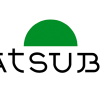But if this is the case, the casino does so for all currencies and not just BNB; it’s simply how they operate. In that case, they also have an extensive collection of Binance Coin games available, whether you prefer Binance Coin slots, poker, roulette, blackjack, or some other table game or live game. However, all of the mentioned casinos include crash games. I only list casinos that allow you to play with Binance Coin. For example, you can play almost all games with Binance Coin just as you would with Bitcoin. But suppose a casino offers the option to play with Binance Coin. A specific Binance casino might convert it to their internal currency when you deposit, then convert it back to BNB at withdrawal. By then the entire market cap for ether stood at $39 billion, a quarter that of Bitcoin’s. Why not let the market – and its participants – chose to work on platforms they find of interest? If a group of developers can force a change in the ledger to override the actions of a user, however unsavory those actions are, how can you trust that ledger won’t be tampered with or manipulated again in the interest of one group over another?
A broad corporate consortium dedicated to a mostly open-source collaborative approach, Hyperledger is seeking to develop nothing less than a common blockchain / distributed ledger infrastructure for the global economy, one that’s targeted not only at finance and banking but also at the Internet of Things, supply chains, and manufacturing. That could drive other prospective miners away, and leave Bitcoin mining even more concentrated among a few centralized players, raising the existential threat of collusion to undermine the ledger. Do they mean that because the information is replicated to thousands of nodes around the world, it is more resilient or redundant? Most importantly, permissioned blockchains are more scalable than Bitcoin’s, at least for now, since their governance doesn’t depend upon the agreement of thousands of unidentified actors around the world; their members can simply agree to increase computing power whenever processing needs rise. 17. Ironically in his most recent op-ed published today, he asks people to “quit this ugly obsession with price.” There are at least 3-4 instances of the co-authors using price as a metric for “strength” in this book.
The language used in this chapter (and elsewhere in the book) suggests that the participants involved in the ICO were investing with the expectation of profit in a common enterprise managed by the Brave team. I’ve raised in other posts and book reviews. Some game providers have specific restrictions regarding which coins can be used for playing their games. Also, these blockchains have to be funded or subsidized in some manner otherwise they could join the graveyard of hundreds of dead coins. Also, strangely the authors are saying the bar for judgement is as low as the financial engineering and socialized loses of the GFC. We will see later that the authors have a dim view of anything that is not a public blockchain. This is FOMO. The authors should tabulate all of the companies that have left the US – or claim to leave – and look at how many jobs they actually set up overseas because of these laws. Those distortions left many investors angry. Might Wall Street be building a “too-big-to-fail” blockchain? Now he was building a universally accessible, decentralized global supercomputer. We want to point out that Cloudbet is primarily a sports betting platform. Might want to reword this in the future.
The passage above also continues to repeat a false dichotomy of “us versus them.” Why can’t both of these types of ‘platforms’ live in co-existence? 2. how the legal hooks into certain blockchains behave versus anarchic chains? How are blockchains “de-nationalized”? Their last sentence uses a false dichotomy because there are different security assumptions based on the targeted operating environment that result in tradeoffs. Perhaps, but there are also overwhelming disincentives for doing so. But this ignores the contributions of BSD, Linux, Apache, and many other projects that are regularly used each and every day by enterprises of all shapes and sizes. Maybe none of these immediate efforts and experiments amount to many tangible outputs in the short-run but it does show that several ecosystems are attempting to be less tribal and more collaborative. It needs more of an explanation beyond the colorful one sentence it was given. 3. being more precise with the term purist… For instance, the original whitepaper uses the term “payment” twelve times. Given enough hashrate, participants can and do fork the network. On p. 183 they discuss data anchoring: taking a hash of data (hash of a document) and placing that into a blockchain so that it can be witnessed.





